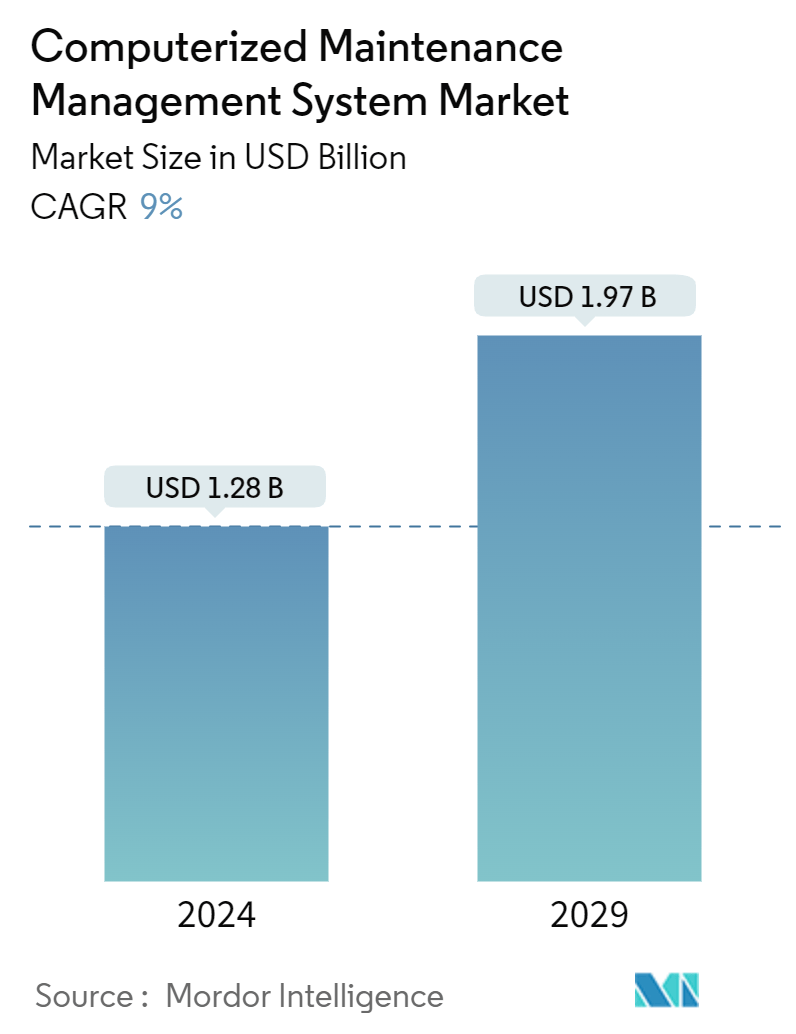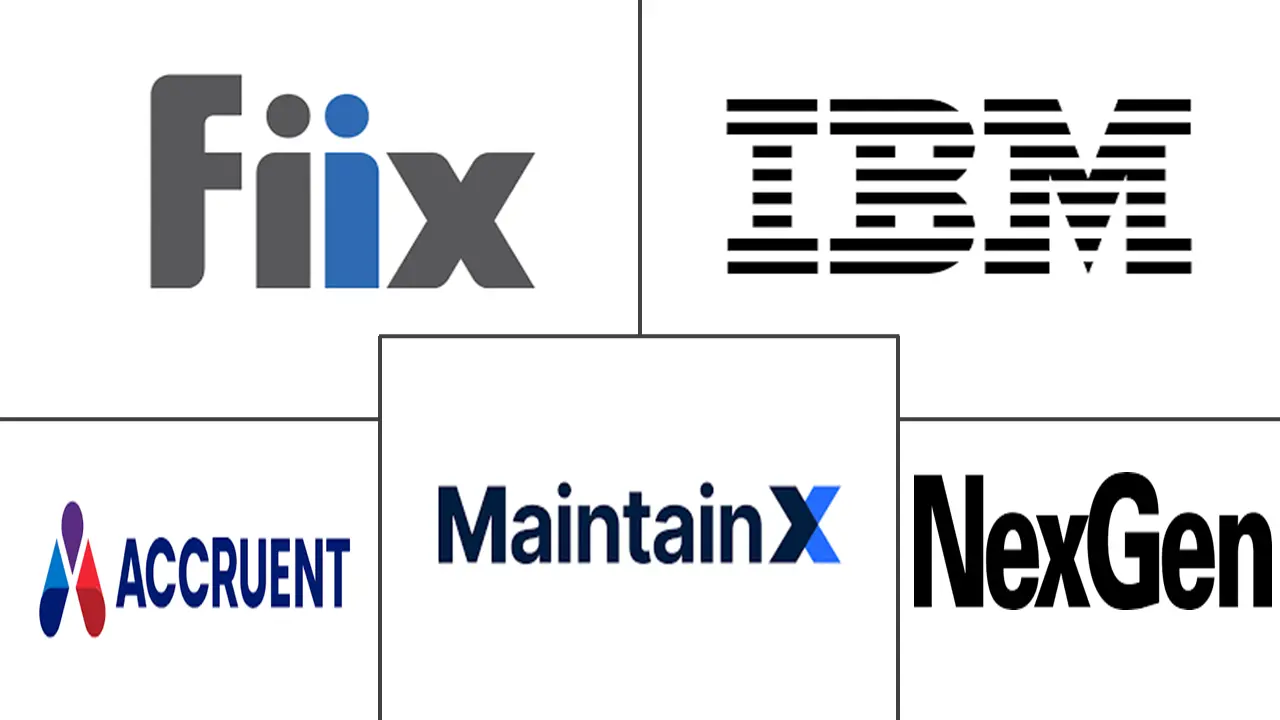Market Size of Computerized Maintenance Management System Industry

| Study Period | 2019 - 2029 |
| Market Size (2024) | USD 1.28 Billion |
| Market Size (2029) | USD 1.97 Billion |
| CAGR (2024 - 2029) | 9.00 % |
| Fastest Growing Market | Asia Pacific |
| Largest Market | North America |
| Market Concentration | Low |
Major Players
*Disclaimer: Major Players sorted in no particular order |
Computerized Maintenance Management System Market Analysis
The Computerized Maintenance Management System Market size is estimated at USD 1.28 billion in 2024, and is expected to reach USD 1.97 billion by 2029, growing at a CAGR of 9% during the forecast period (2024-2029).
- A unified platform centralizes all asset-related data, breaking down silos and granting organizations a comprehensive view of their assets. This centralization enhances coordination among departments, managing assets, streamlining processes, and curbing inefficiencies. Organizations gain real-time insights into asset performance, maintenance history, and associated costs, empowering them to make data-driven decisions. Organizations can realize substantial cost savings by optimizing asset performance and streamlining processes. By adopting a comprehensive view of asset data, organizations enhance their ability to make informed choices about acquiring, maintaining, and replacing assets.
- Contemporary CMMS solutions are broadening their scope, now encompassing functionalities for maintenance, inventory oversight, procurement, and work order management. Numerous CMMS solutions feature APIs, enabling seamless integration with several enterprise systems such as ERP and CRM, thereby enhancing the concept of a unified platform. Furthermore, these solutions boast advanced data analytics and reporting features, equipping organizations with insights into asset performance and spotlighting areas ripe for enhancement.
- Manufacturing and other industries are shifting from a reactive maintenance approach, where repairs occur only post-breakdown, to a more proactive stance. This preventive maintenance strategy emphasizes early identification and resolution of potential issues, averting significant disruptions. Organizations sidestep expensive breakdowns and emergency repairs by addressing concerns promptly and minimizing production downtime.
- In response to this evolving demand of preventive maintenance, CMMS vendors enhance their offerings with advanced features. CMMS vendors prioritize mobile-friendly platforms, with organizations leaning towards mobile devices for maintenance. This allows technicians to conveniently access maintenance data and update records directly from the field. Furthermore, cloud-based CMMS solutions are gaining traction, lauded for their enhanced accessibility, scalability, and cost benefits.
- Organizations face a significant hurdle when considering a CMMS due to the substantial initial investment. This investment encompasses software licensing fees, implementation costs, necessary hardware upgrades, and training expenses. While the benefits of a CMMS are clear—ranging from reduced downtime and enhanced efficiency to notable cost savings—pinpointing the exact ROI remains a challenge. Such uncertainty complicates the justification of the upfront costs. Consequently, the steep initial outlay can hinder CMMS adoption, particularly for smaller businesses and those operating on tighter budgets.
- World Bank forecasts indicate that in 2024, emerging markets and developing economies are set to witness a GDP growth of nearly four percent year-on-year. This anticipated growth outpaces the 1.5 percent forecasted for advanced economies, highlighting a significant divergence in economic trajectories. As global GDP strengthens, businesses ramp up their capital expenditures, particularly in machinery and equipment. This surge in asset investment amplifies the necessity for efficient maintenance management, consequently heightening the demand for CMMS solutions.

